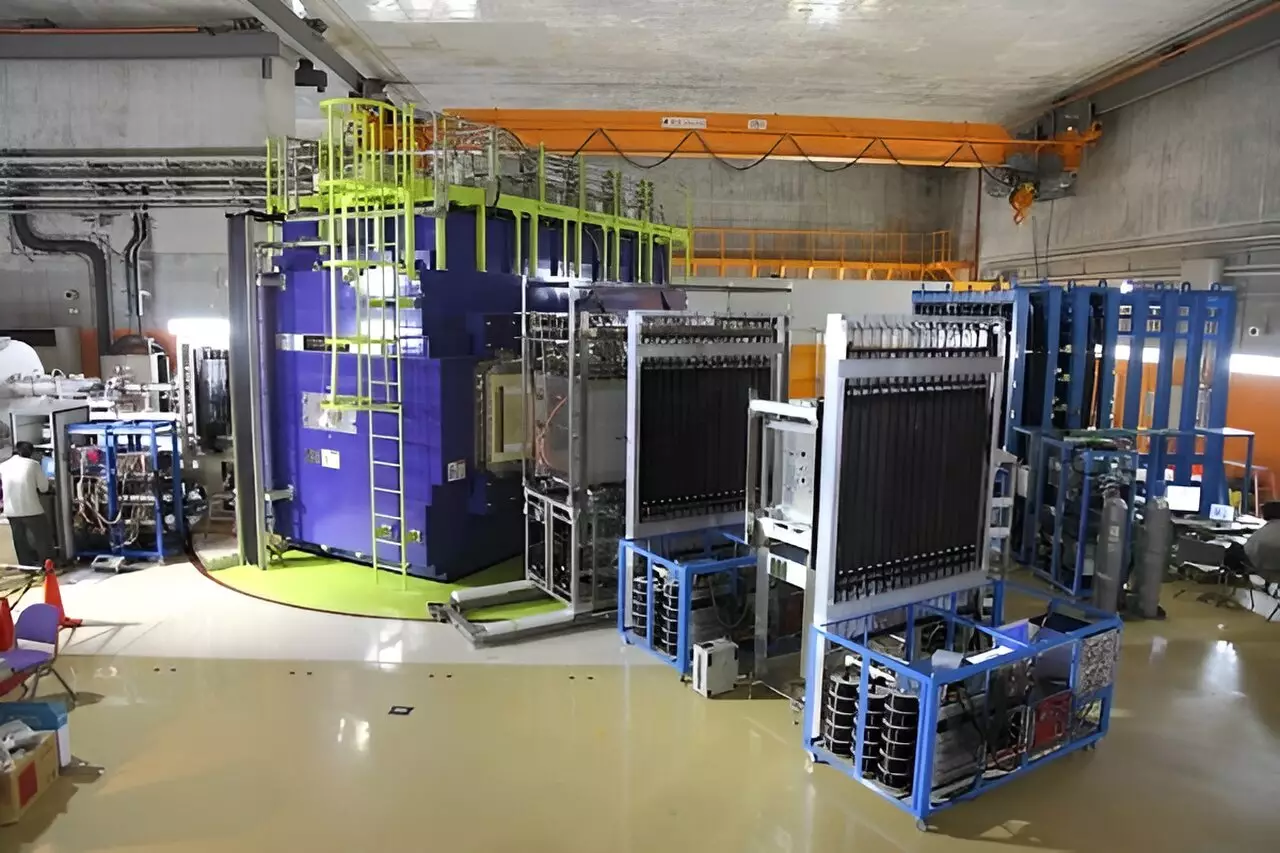The realm of nuclear physics is replete with enigmas. One of the most intriguing discoveries in recent years has been the identification of the isotope 30F, a rare variant of fluorine, at the RIKEN RI Beam Factory (RIBF) in Japan. This breakthrough, achieved through the combined efforts of the SAMURAI21-NeuLAND Collaboration, has opened up new horizons for understanding nuclear structures, particularly those that reside on the fringes of stability and richness in neutrons. The implications of studying such isotopes are profound, potentially affirming or challenging existing theories regarding nuclear behavior under extreme conditions.
At the heart of this discovery is a large collaborative team comprising over 80 researchers from institutions around the globe, including physicists from RIKEN, GSI-FAIR, and TU Darmstadt in Germany. Their concerted research efforts, detailed in the esteemed journal *Physical Review Letters*, have yielded valuable insights into the nuclear structure of 30F and its relationship to neighboring isotopes like 29F and 28O. As the corresponding author Julian Kahlbow articulated, the study examined the limits of known neutron-rich isotopes and aimed to elucidate how nuclear structures behave under conditions fraught with uncertainty.
The researchers approached the endeavor with a focus on understanding so-called ‘magic numbers’—the specific numbers of protons or neutrons that confer a measure of stability on isotopes. Particularly, they sought to investigate the neutron-rich isotopes’ collapse beyond traditional “magic” configurations, revealing a phenomenon dubbed the “Island of Inversion,” where classic nuclear models falter.
The pursuit of knowledge regarding 30F is fraught with complications primarily due to its ephemeral nature; it exists for a paltry 10-20 seconds before decaying. This instability renders direct measurements particularly challenging, necessitating innovative techniques to infer its properties. By analyzing the decay products—specifically, the isotopes 29F and a lone neutron—the team reconstructed the 30F nuclear spectrum. Their methodology relied on sophisticated equipment, including a specially designed 4-ton neutron detector named NeuLAND, which aided in identifying patterns in the decay process.
To explore how 30F was produced, the team created an ion beam of 31Ne and targeted it on a liquid hydrogen environment, leading to the ejection of protons and the subsequent formation of 30F. This high-speed approach underscored the dynamic conditions under which new isotopes are born and studied, revealing both the beauty and complexity inherent in nuclear experimentation.
The analyses conducted by the SAMURAI21-NeuLAND team hinted at the presence of unique nuclear configurations suggesting that 30F is indicative of potential superfluidity among its neighboring isotopes. Kahlbow’s commentary on these findings underscores that beyond a neutron count of 20, classic notions of “magicity” diverge, suggesting that as the isotopes become increasingly neutron-rich, they may exhibit behaviors resembling those of superfluid matter.
The speculation that isotopes 29F and 28O dwell within a superfluid state represents a significant leap in nuclear structure understanding. Here, neutrons are proposed to form pairs and dart between differing energy levels, an observation that could redefine what is known about the interactions governing weakly bound systems.
Moving forward, the implications of these discoveries extend well beyond the confines of the immediate observations. The potential to identify superfluid states in neutron-rich environments could afford substantial contributions to theoretical frameworks related to phenomena such as neutron stars and their characteristic equations of state. Kahlbow emphasized the importance of further experimental investigations into neutron correlations, alluding to potential studies that could unravel the intricacies of pairing interactions and expand overall nuclear theory.
Additionally, research into whether isotopes like 29F and 31F may function as halo nuclei—structures where one or two neutrons orbit significantly distant from the core—could yield critical insights into the nature of nuclear stability. The pioneering work conducted ignites curiosity and ambition to delve deeper into the so-called unexplored region of the nuclear chart, a frontier that has only been made navigable thanks to advancements in accelerator technology.
The detection of 30F represents not merely a scientific curiosity but a foundational brick in reconstructing the broader landscape of nuclear physics. As future studies emerge from this discovery, they hold the promise of redefining our understanding of rare isotopes and their unusual behaviors. By embracing the complexities of neutron-rich isotopes, the global physics community may stand on the threshold of a new era of discovery—one that challenges, enriches, and potentially reimagines our comprehension of the atomic universe.


Leave a Reply